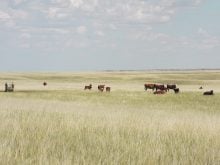Research in swine nutrition and health is a continued focus at the Prairie Swine Centre, said its new chief executive officer.
Murray Pettitt, who took over from former CEO Lee Whittington in June, outlined what’s new at the research facility during the Saskatchewan Pork Industry Symposium held in Saskatoon Nov. 14-15.
One project is looking at the interaction of nutrition and animal health, including the development of low-cost feeding strategies for the gestating sow, as well as improved nutrient use and use of alternative ingredients in the grower-finisher pig.
Read Also

Animal protection delivery to change in Saskatchewan
The Saskatchewan government is looking for a new agency to handle animal welfare after Animal Protection Services of Saskatchewan decided not to renew its contract next year.
The research highlights the impact of high dietary fibre and immune challenge on threonine, which is one of the essential amino acids that have to be supplied in the feed of growing pigs.
Alternative strategies are being explored to maintain animal performance in the absence of antibiotics.
“Raising animals without antibiotics is becoming more and more of a reality and we need to find other ways to stimulate the immune system so that the animals can cope with a disease challenge if they’re exposed to something,” said Pettitt.
“It involves looking at the interactions between (dietary fibre and) specific amino acid levels fed to animals and what happens to them during an immune challenge.”
The nitrogen balance study used 90 barrows with a 20 kilogram initial body weight. They were fed one of 10 diets comparing high and low dietary fibre with and without immune system stimulation.
“The threonine requirement went up with either an immune challenge or high fibre diets, but if you gave them both, the effect wasn’t additive,” he said.
The objective of another study is to determine the effects of long-term exposure of graded levels of deoxynivalenol (DON) on growth performance, nutrient use and overall health status of grower-finisher pigs.
It will also try to establish the economic viability of feeding DON-contaminated diets in the grower-finisher period.
Researchers are using 200 finisher pigs (75 kg initial body weight), housed five pigs per pen and fed one of four diets: a control or DON-contaminated (one, three, or five parts per million) for six weeks.
“The gist of the work is, can pigs adapt to a small amount of DON in the diet?” he said.















